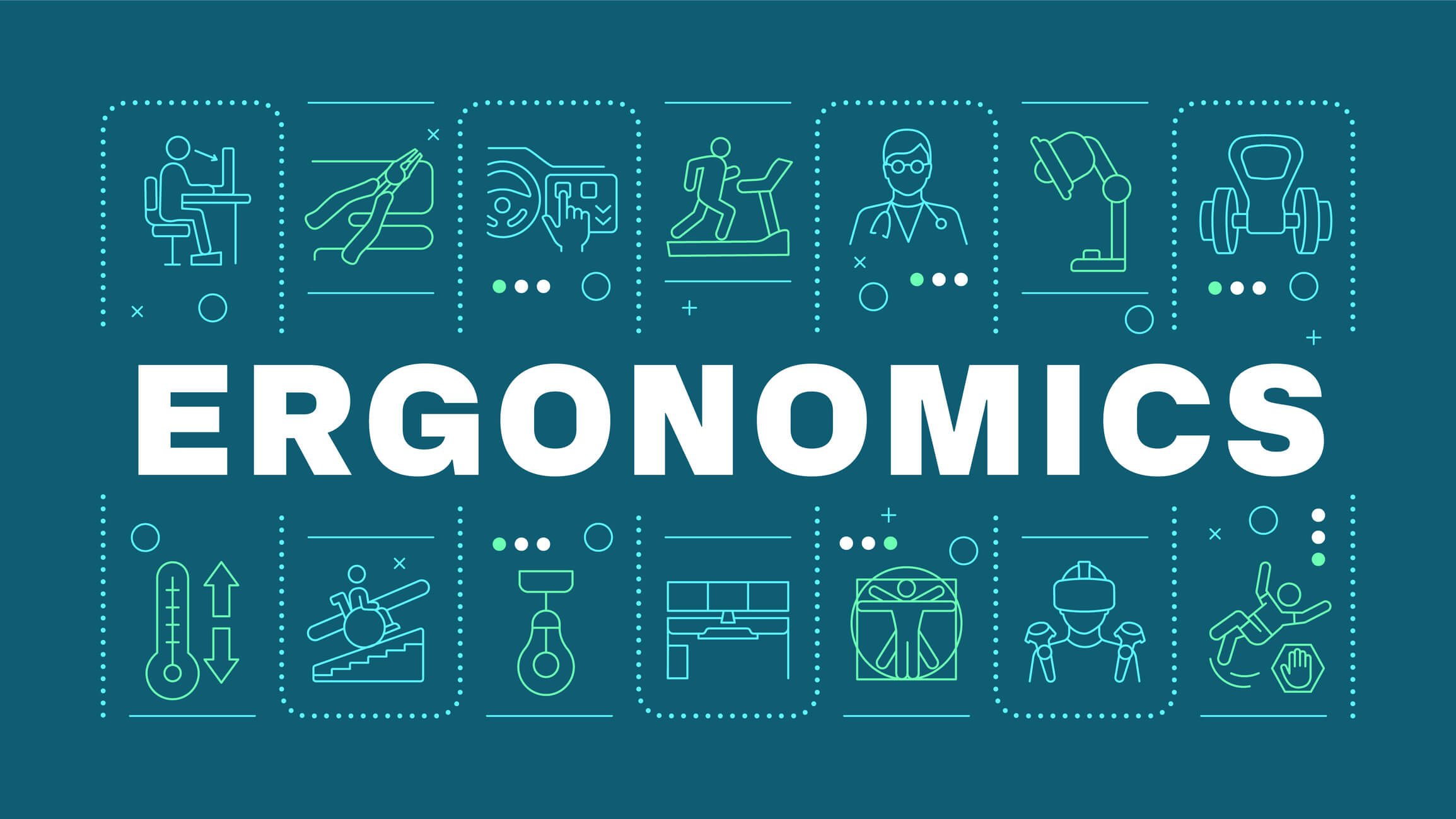11 Essential Ergonomic Statistics Everyone Should Know
Ergonomics is a scientific study focused on optimizing human efficiency in working environments. It plays a crucial role in enhancing productivity and safeguarding health. Poor ergonomic practices can result in significant physical injuries, including musculoskeletal disorders and chronic pain. This, in turn, affects employee performance and overall workplace efficiency.
11 Must Know Ergonomic Statistics
The importance of ergonomics is underscored by various global statistics, revealing the widespread impact of ergonomic injuries. Data from OSHA and other sources highlight the prevalence of such injuries and underscore the need for effective ergonomic interventions. By addressing ergonomic issues, workplaces can improve employee well-being and productivity, while reducing injury-related costs.
Musculoskeletal Disorders: A Leading Cause of Disability
Musculoskeletal disorders (MSDs) have been identified as a leading cause of disability worldwide. According to the Institute of Health Metrics and Evaluation (IHME), MSDs have ranked first as the top cause of years lived with disabilities (YLDs) from 1990 to 2019. These disorders, which include conditions affecting muscles, bones, and joints, significantly impact the quality of life and work productivity of individuals.
Lower Back Pain: The Persistent Culprit
Lower back pain is one of the most common and debilitating ergonomic injuries. The Global Burden of Disease Study (2017) has consistently ranked lower back pain as the leading cause of disability since 1990. This statistic underscores the critical need for ergonomic interventions to prevent and manage lower back pain, particularly in the workplace.
Occupational Overuse Syndrome in the USA
The National Institute of Occupational Safety and Health (NIOSH) predicted that by the year 2000, 50% of the workforce would suffer from repetitive strain injuries (RSIs). Despite advancements in ergonomics, RSIs remain prevalent, highlighting the ongoing need for effective ergonomic programs and practices to mitigate these injuries.
Work-Related Musculoskeletal Disorders in the UK
In the UK, around 1.1 million people suffered from work-related musculoskeletal disorders in 2001/02, according to the Health and Safety Executive (HSE). These disorders resulted in approximately 12.3 million lost working days, with each sufferer taking an average of 19.4 days off work. This significant loss in productivity emphasizes the economic impact of poor ergonomics.
Economic Impact of Ergonomic Injuries in the USA
The Occupational Health and Safety Administration (OSHA) estimates that work-related injuries account for more than 647,000 injuries and illnesses annually. These injuries contribute to over one-third of workers’ compensation costs, amounting to an estimated $15 to $20 billion in direct costs and an additional $45 to $60 billion in indirect costs. Effective ergonomic practices could substantially reduce these financial burdens.
Ergonomic Interventions and Productivity Gains
Research has shown that effective ergonomic interventions can lead to significant productivity gains. For instance, a company that implemented a proactive ergonomic program reported savings of $2 million in workers’ compensation and medical claims. This example demonstrates the tangible benefits of investing in ergonomics for both employee health and company profitability.
Prevalence of Ergonomic Injuries in Australia
A 2002 study of 60 Sydney call center workers revealed significant underreporting of ergonomic injuries. While only a few officially reported Occupational Overuse Syndrome (OOS), up to 70% experienced aches and pains. This discrepancy underscores the widespread prevalence of ergonomic issues that remain unaddressed due to insufficient reporting mechanisms. The findings highlight the need for improved awareness and reporting processes to ensure that ergonomic injuries are accurately recorded and addressed. Enhanced reporting can lead to more effective interventions, promoting healthier and more productive work environments.
WorkCover Claims in Victoria, Australia
In Victoria, Australia, WorkCover Victoria has reported that soft tissue and muscle injuries constitute 62% of all WorkCover claims. Notably, back injuries account for nearly half of these claims, highlighting a significant workplace issue. This data reveals the widespread nature of ergonomic injuries within various occupational settings. The high incidence of such injuries points to the critical need for preventive ergonomic measures.
Implementing proper workplace ergonomics can reduce the frequency of these injuries, promote better health outcomes for employees, and reduce the overall number of claims, ultimately benefiting both workers and employers.
Musculoskeletal Disorders in Computer Users
The Chartered Institute of Ergonomics and Human Factors has found that 1 in 5 regular computer users suffer from musculoskeletal disorders (MSDs) affecting their upper limbs. These disorders are commonly linked to poor ergonomic practices, such as inadequate workstation setup and extended periods of repetitive tasks without sufficient breaks. Conditions like carpal tunnel syndrome, tendonitis, and neck pain are prevalent among computer users. Addressing these issues through ergonomic interventions, such as adjustable workstations, ergonomic chairs, and regular breaks, can significantly reduce the risk of developing MSDs and enhance overall comfort and productivity for computer users.
Benefits of Ergonomic Programs
Implementing ergonomic programs yields significant benefits, notably reducing workplace injuries and associated costs. According to the Chartered Institute of Ergonomics and Human Factors, effective office ergonomics interventions can reduce musculoskeletal problems by 61%, cut lost workdays by 88%, and decrease staff turnover by 87%.
These improvements not only enhance employee well-being but also contribute to substantial cost savings for employers. The cost-to-benefit ratio of ergonomic interventions averages 1:1.78, demonstrating that for every dollar spent, there is a return of $1.78. Moreover, the payback period for these investments is just 0.4 years, making them economically advantageous in the short term.
Ergonomic Injuries and Costs
According to the Bureau of Labor Statistics, the rate of Work-Related Musculoskeletal Disorders (WMSD) cases was 26.9 per 10,000 full-time workers in 2020. In 2021, the financial impact of workers’ compensation claims was substantial, with $13.3 billion attributed to overexertion involving outside sources such as material handling, making it the leading cause of disabling injuries (Liberty Mutual, 2021).
Additionally, $4.7 billion was spent on claims related to awkward postures and $1.7 billion on injuries from repetitive motions involving microtasks, highlighting the significant economic burden of poor ergonomic practices in the workplace.
Conclusion
Ergonomics extends beyond mere comfort, encompassing health, productivity, and economic efficiency. The statistics highlighted underscore the vital importance of ergonomic practices in the workplace. By identifying and mitigating ergonomic risks, employers can foster healthier work environments, ultimately benefiting both employees and organizational performance. Implementing ergonomic solutions is a strategic investment, not just an expense, that enhances workforce well-being and productivity. Prioritizing ergonomics leads to fewer injuries, improved employee morale, and significant economic advantages, reinforcing its essential role in modern workplace management.
Related Posts

10 Holiday Safety Tips You Must Know for 2025

$99 OSHA 30 and $45 OSHA 10 Online Courses



